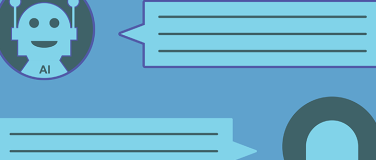Organizations in the life sciences industry are focusing on a patient-first mentality and are looking to use digital transformation to make that happen. At the heart of a patient-centric transformation is self-service to enable a patient to access information easily and quickly. That’s why many life sciences companies are moving away from traditional engagement channels and are looking to leverage artificial intelligence (AI) and machine learning (ML) to interact with their patients in real-time through chatbots, mobile apps, and online portals.
Patient engagement and information accessibility are certainly crucial, yet patient-centric transformation also depends on how companies can maximize their existing IT investments, incrementally add business capabilities, and stay compliant along the way. This may seem like a tall order, but there is a solution: APIs. Reusable and modular, modern APIs promote connectivity, data accessibility, and security across an organization.
In life sciences, companies can achieve a patient-centric digital transformation by evolving their medical affairs application architecture to a microservices-based architecture with APIs at the core. In this blog, we’ll explore what this API-led approach looks like in life sciences and how it can benefit your organization.
API-led connectivity in life sciences
API-led connectivity is an approach that defines methods for connecting and exposing your assets. These APIs play a specific role: Unlocking data from systems, composing data into processes, and/or delivering an experience.
Specifically, APIs have the capacity to:
- Decompose system data and functionality through System APIs. You can leverage System APIs to externalize data or functionality from core systems into discrete services that deliver a specific set of data such as medical information document management systems, case management systems, or adverse events reporting.
- Orchestrate processes and “package” them into composite applications through Process APIs. The business can then self-serve on the System APIs and orchestrate across relevant data sets to compose their own processes such as structured and unstructured case triaging.
- Expose applications and assets as services through Experience APIs. Experience APIs are the end-channel, such as mobile applications, portals, chatbots, voicebots, etc.
APIs in action
While an API-led approach to digital transformation has many facets, a good example of APIs put into practice in the life sciences industry is automating case intake and triaging.
Consider traditional unstructured intake channels for patient information like phone, email, physical mail, or fax and contrast that with newer channels like virtual assistants, chatbots, and voicebots. In many life sciences organizations, integrating each of these channels into a backend Medical Information System (MIS) is a siloed process with the data locked into these separate silos, creating a costly and cumbersome process. Under an API-led approach via MuleSoft, however, companies can easily and efficiently integrate all structured and unstructured intake channels.
The diagram below gives a visual overview of an API-led approach to case intake automation. The structured case intake API and unstructured case intake API abstract the case creation process of the case management system exposing only the fields required and handling any necessary transformations and authentication with the MIS to create a case record. Once built, these APIs can be used to easily onboard any future channel, structured or unstructured, such as a mobile app enabled with branding for a new drug or patient interaction with a social media platform that needs to be captured for case intake.

APIs also have a hand in triaging cases into the right category such as medical information, product quality or complaint, or adverse events. Triaging involves parsing intake data and using predefined rules to categorize that data. Because parsing data is a repeatable activity, it’s a prime candidate for modern APIs and leveraging AI capabilities like optical character recognition, language translation, and natural language processing. A set of reusable and modular APIs can easily configure an MIS to automate this process, streamlining and scaling workflows and accurately routing cases.
For example, let’s say a patient engages with an interactive voice response channel like a 1-800 number to ask a question or report an adverse event. With the help of APIs, a company could record, transcribe, and triage this interaction to automatically capture details like the patient’s name, product information, and other relevant data in real-time. The company could even translate an inquiry and response via a language translation API if needed. The result? An improved end-user experience due to a faster response and resolution.
In life sciences, APIs can specifically assist medical institutions, doctors, and pharmacists who interact with patients through more traditional channels that require document processing like fax or email. APIs do this by automating the processing and extraction of information from images, including prescription labels and medical records.
Beyond patient-centric digital transformation
Case intake and triaging are two use cases to showcase how an API-led approach can enable digital transformation and support a patient-centric vision but that’s not all it can help with. Harnessing the power of APIs has additional benefits, including increased efficiency, greater agility, and better security. Here is a list of those benefits and what they mean for the life sciences industry:
- Greater patient engagement: Through self-serve options like portals, mobile apps, chatbots, and voicebots, patients can access approved scientific information whenever, however, and wherever they wish.
- Lower total cost of ownership: By exposing underlying data and functionality as APIs, IT teams maximize their investments in existing systems. They can also confidently experiment with bleeding edge technologies and follow due diligence before committing to any technology.
- Increased efficiency: Automating and encapsulating repeatable tasks within APIs gives agents more time to serve their patients better. The automation of case fulfillment also allows patients to obtain reliable information in mere minutes.
- More agility: Reusing the same set of underlying APIs enables companies to deliver newer capabilities like portals or apps to their patients faster.
- Improved compliance: The right level of logging, auditing, reporting, and retention controls can be put in place across APIs to keep MIS compliant with governing regulations. These controls are also scalable, supporting a consistent approach to compliance across IT teams.
- Better security: Enterprise-grade security controls can be applied to primary APIs that handle authentication, authorization (role-based access), and encryption of data during transit. Controls for throttling to prevent Distributed Denial of Service, rate limits, and other attacks additionally protect services and data. Because these controls are scalable, companies no longer have to rethink security every time they add a new technology component.
How you can bring APIs on board in your organization
The strategy to enable the API-led approach, on its own, is not enough for life sciences organizations to maximize value. After all, even the most robust of platforms are only useful to the extent that consumers can access the platform’s capabilities.
Establishing a Center for Enablement (C4E) can help life sciences organizations overcome this challenge to enable the business to self-serve and scale innovation. C4Es enable governance and enable the management of reusable assets. They also promote a self-service and consumption-driven development model through discovery of existing API capabilities.
Launching your organization’s patient-centric digital transformation is within reach. Learn more at the Deloitte MuleSoft Alliance website.









